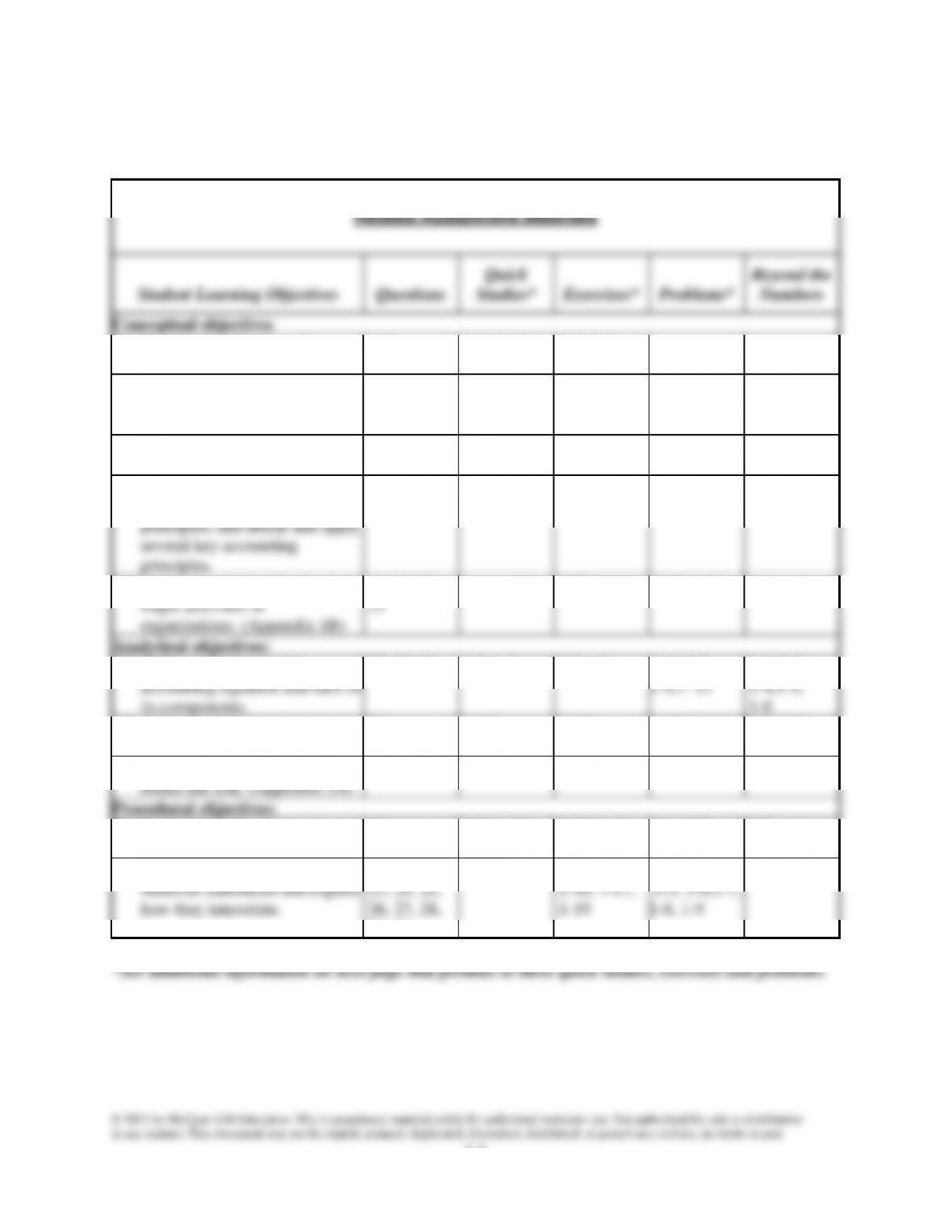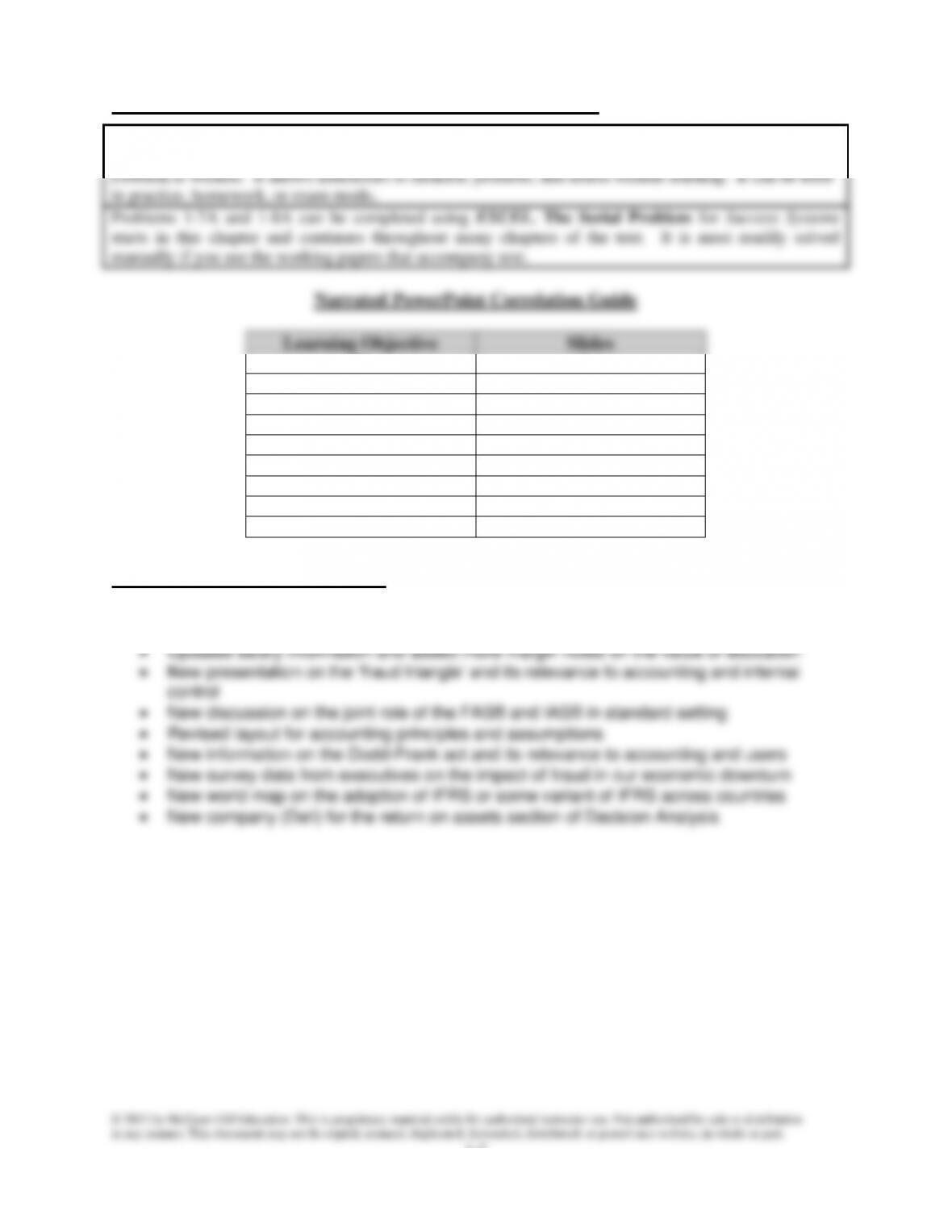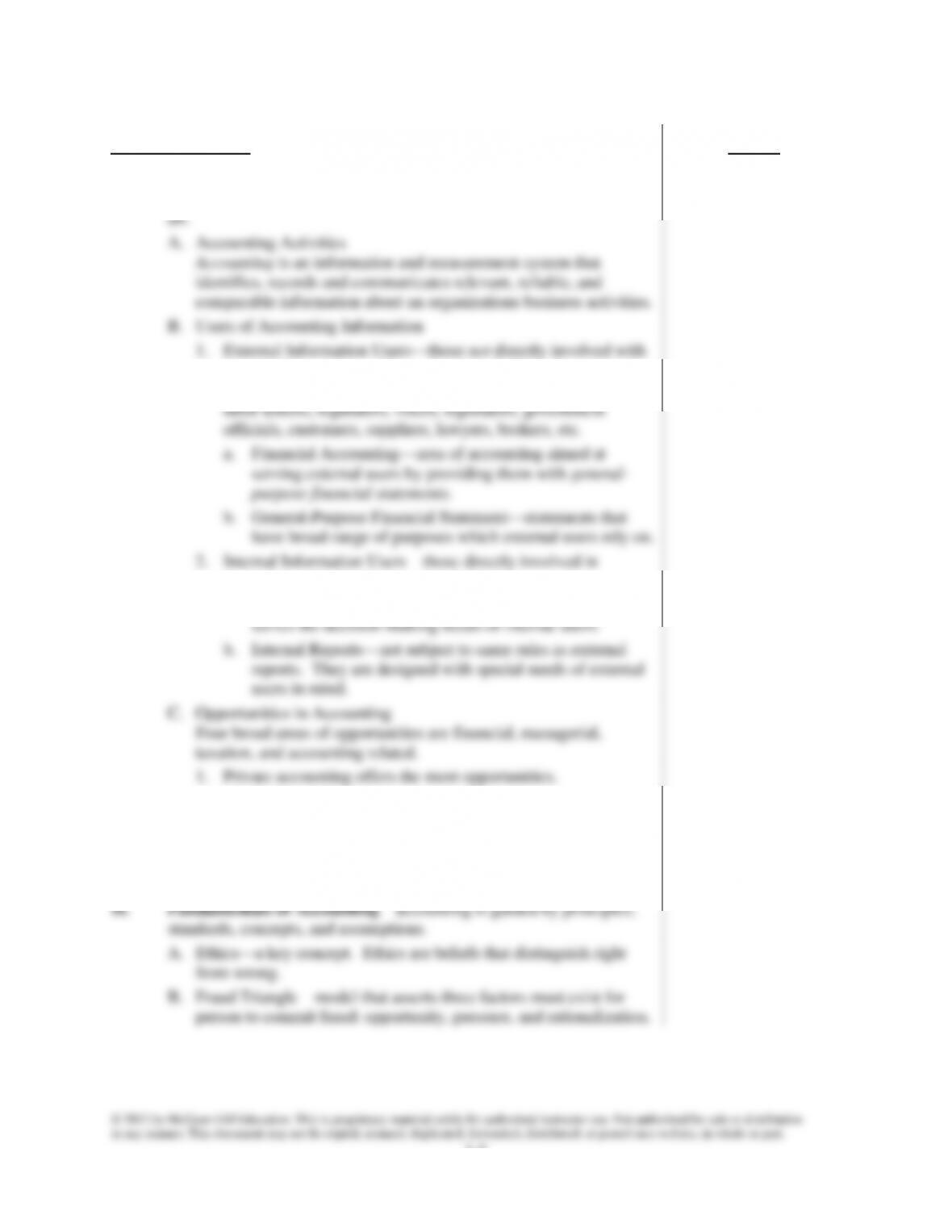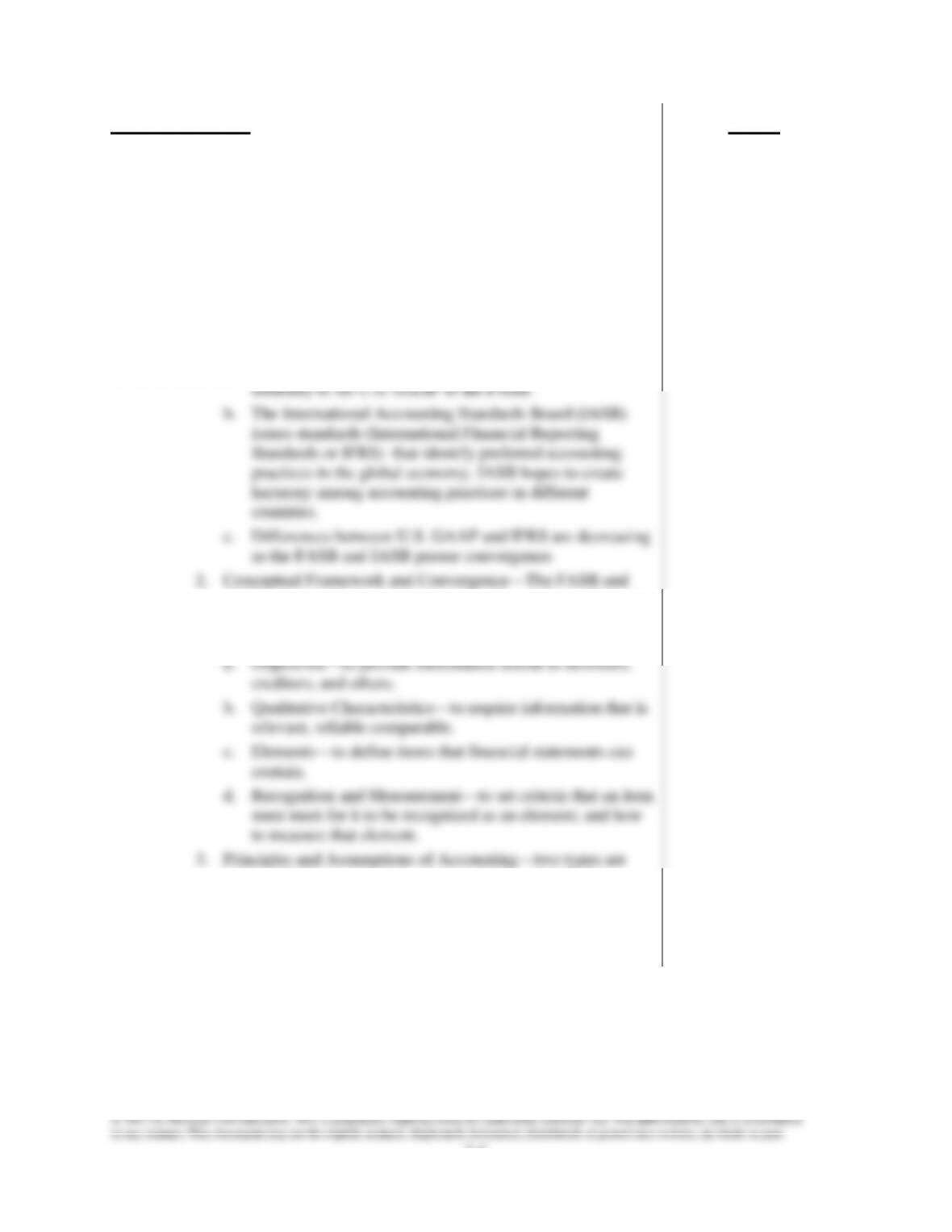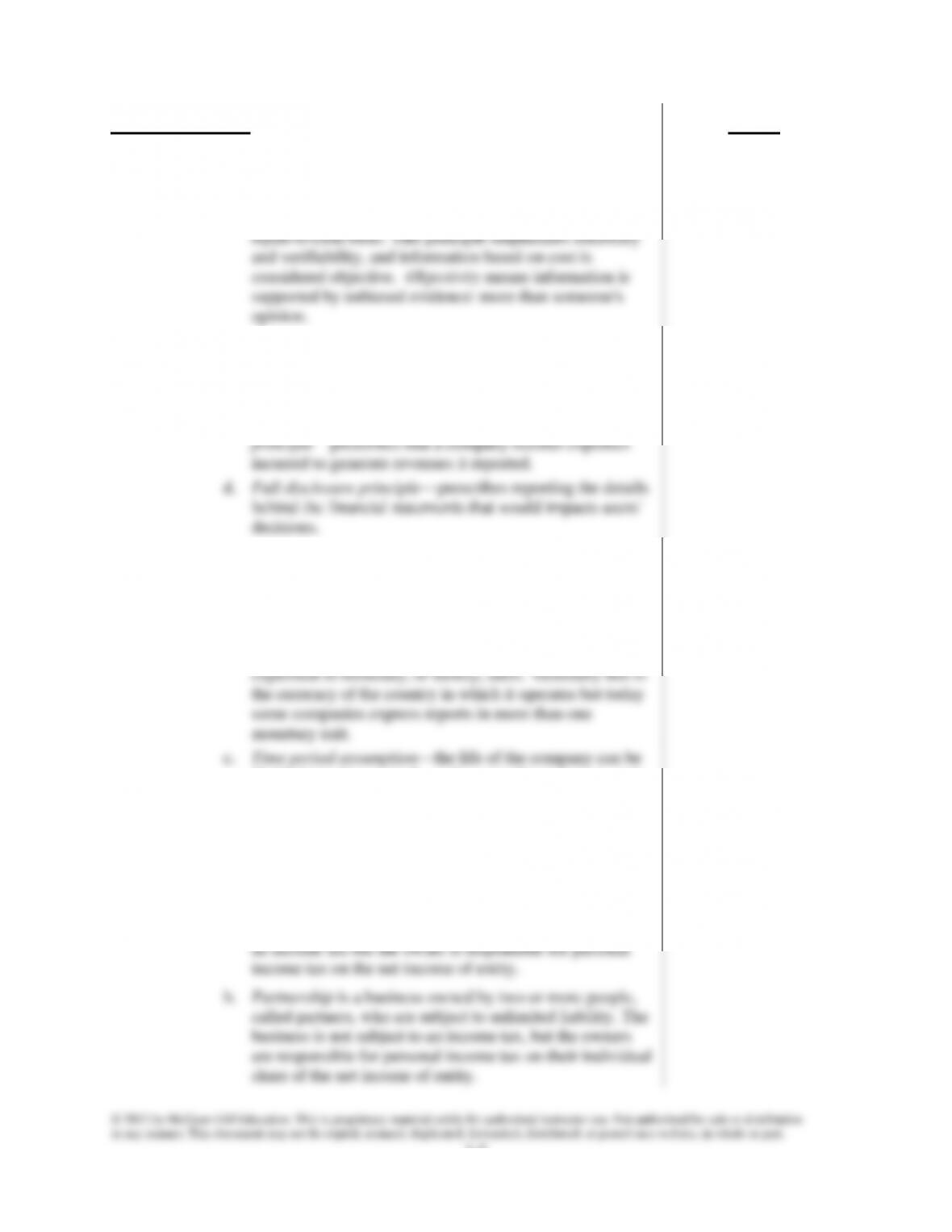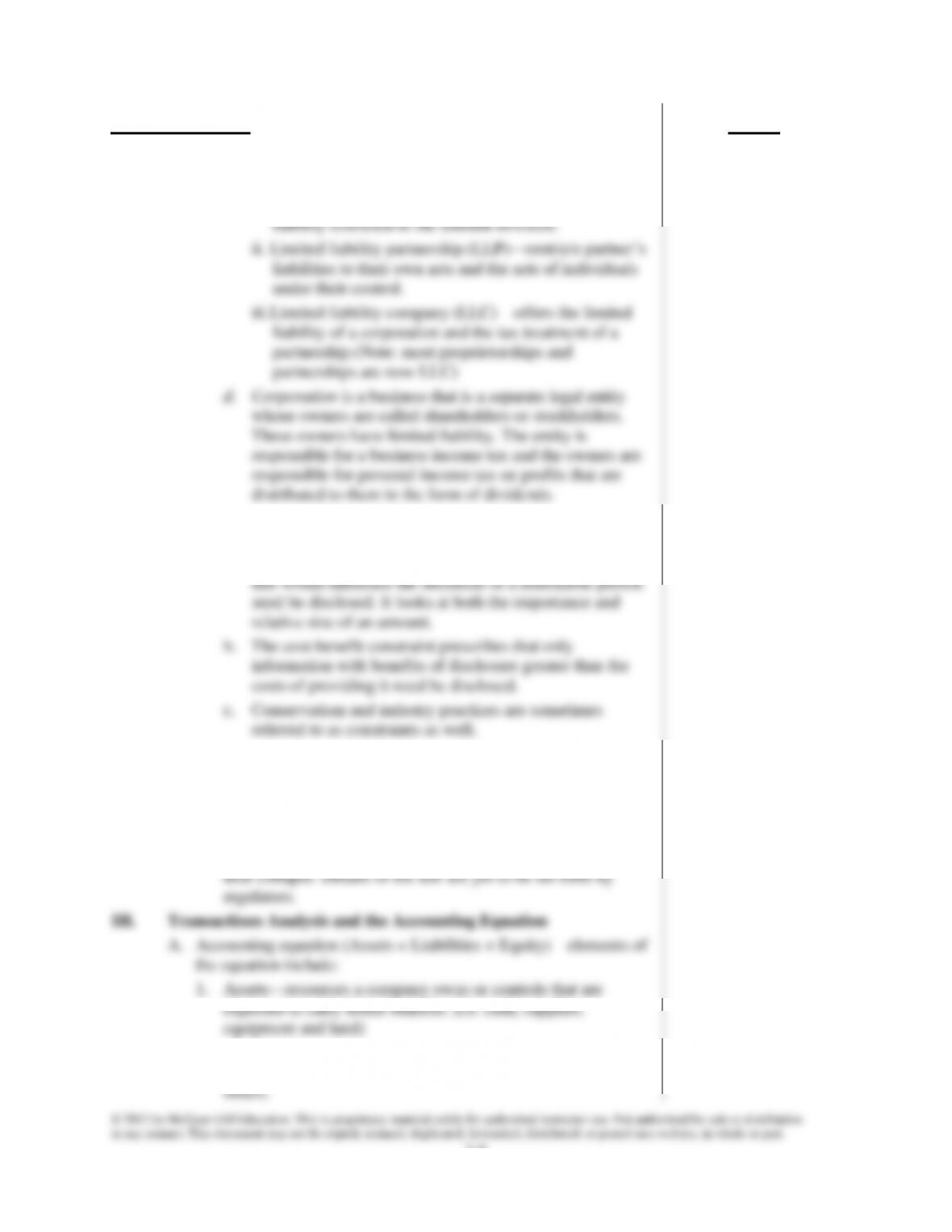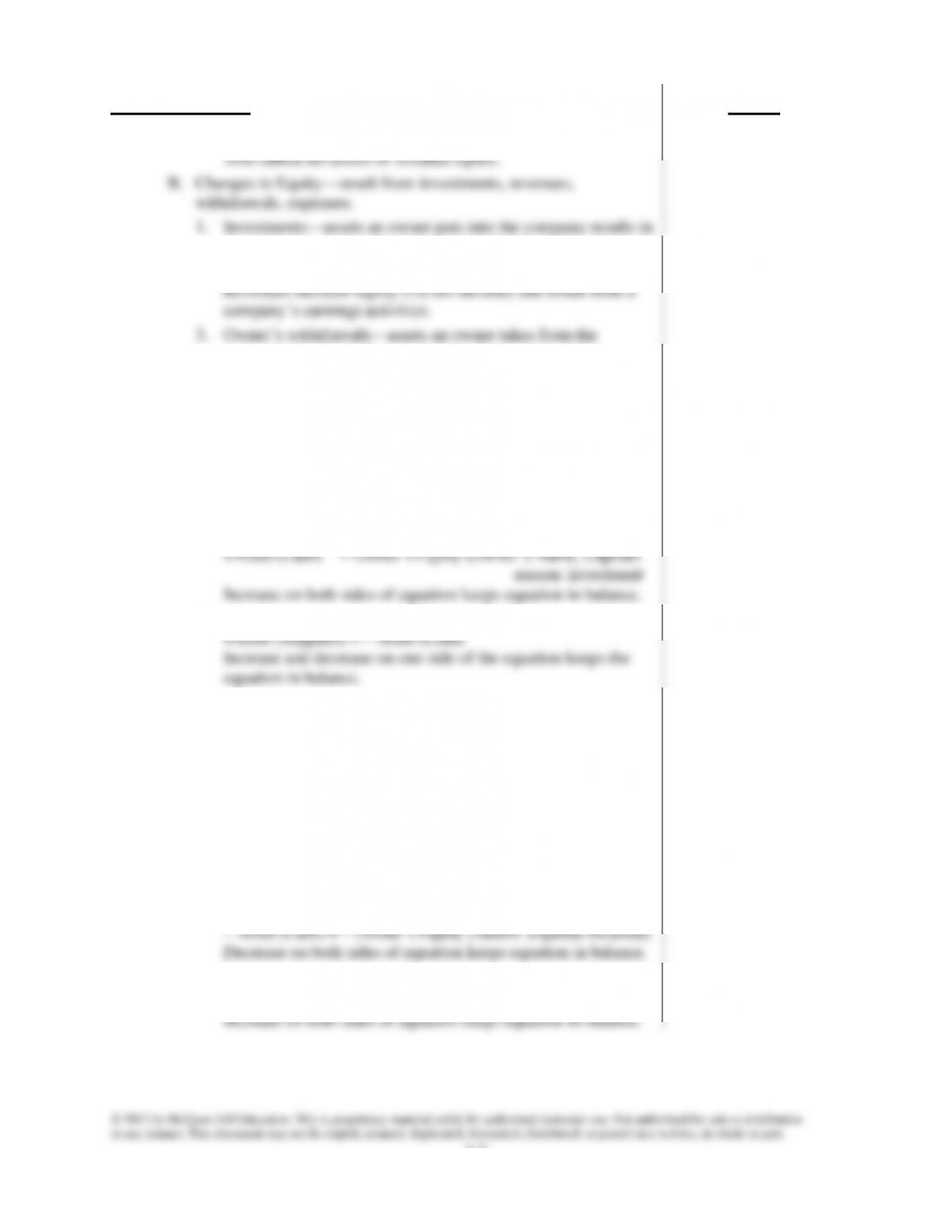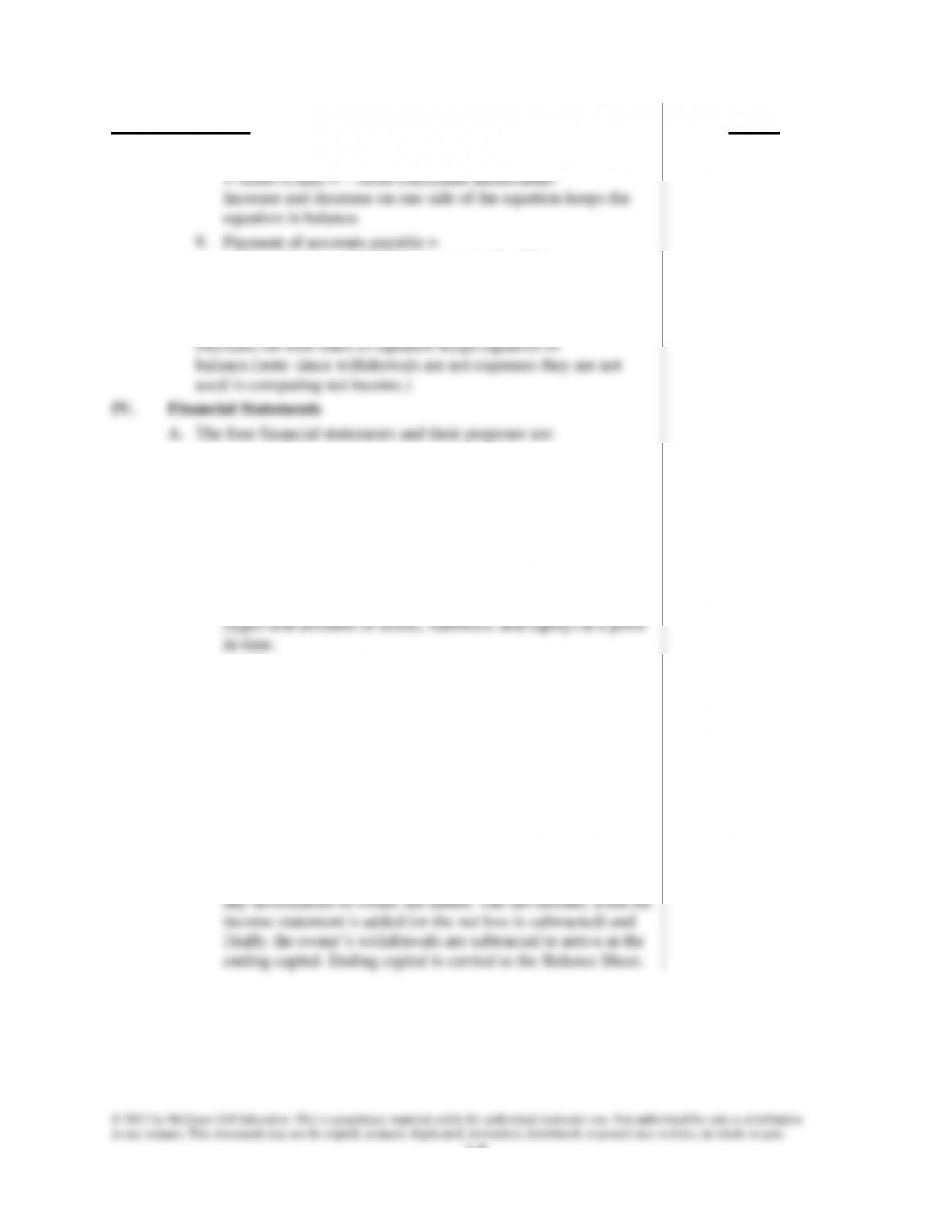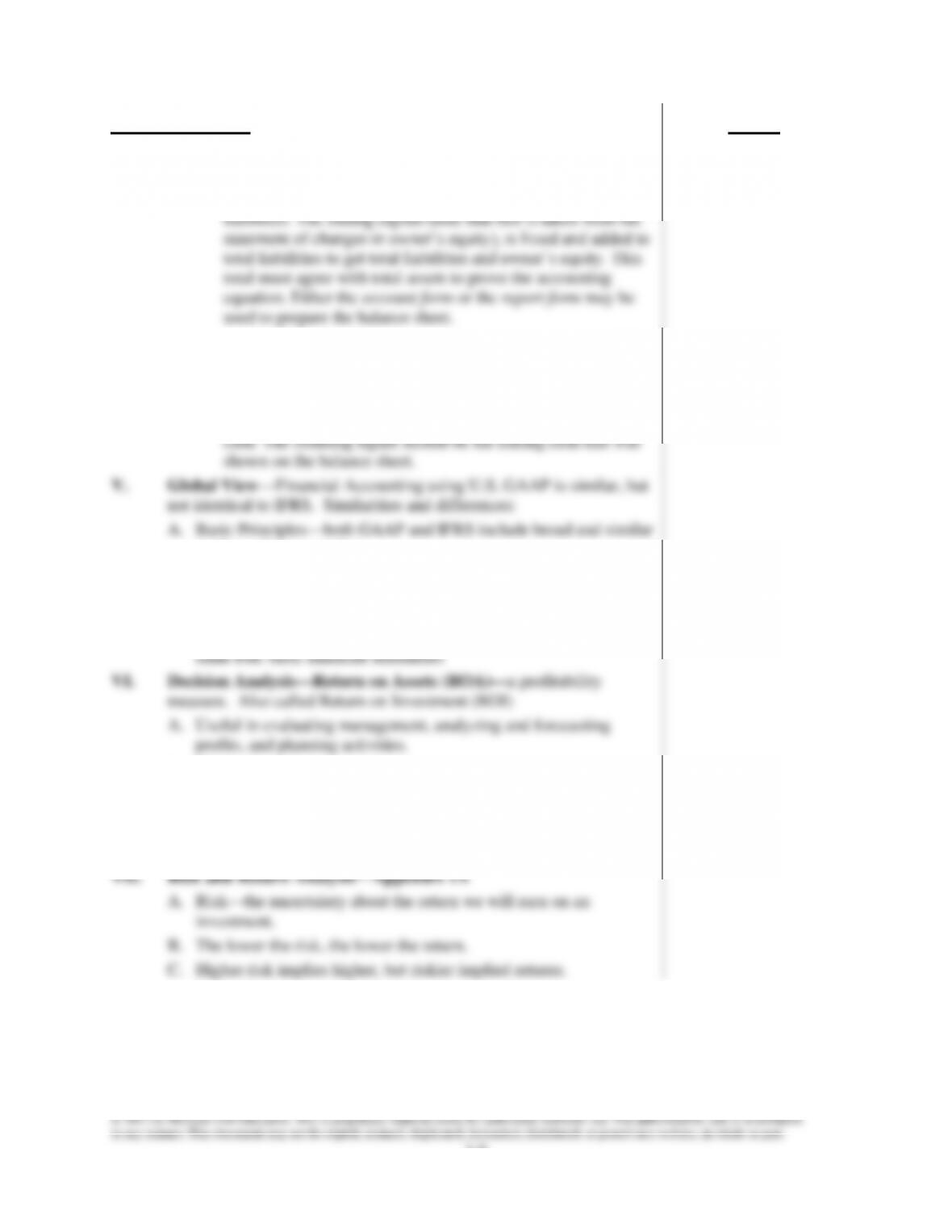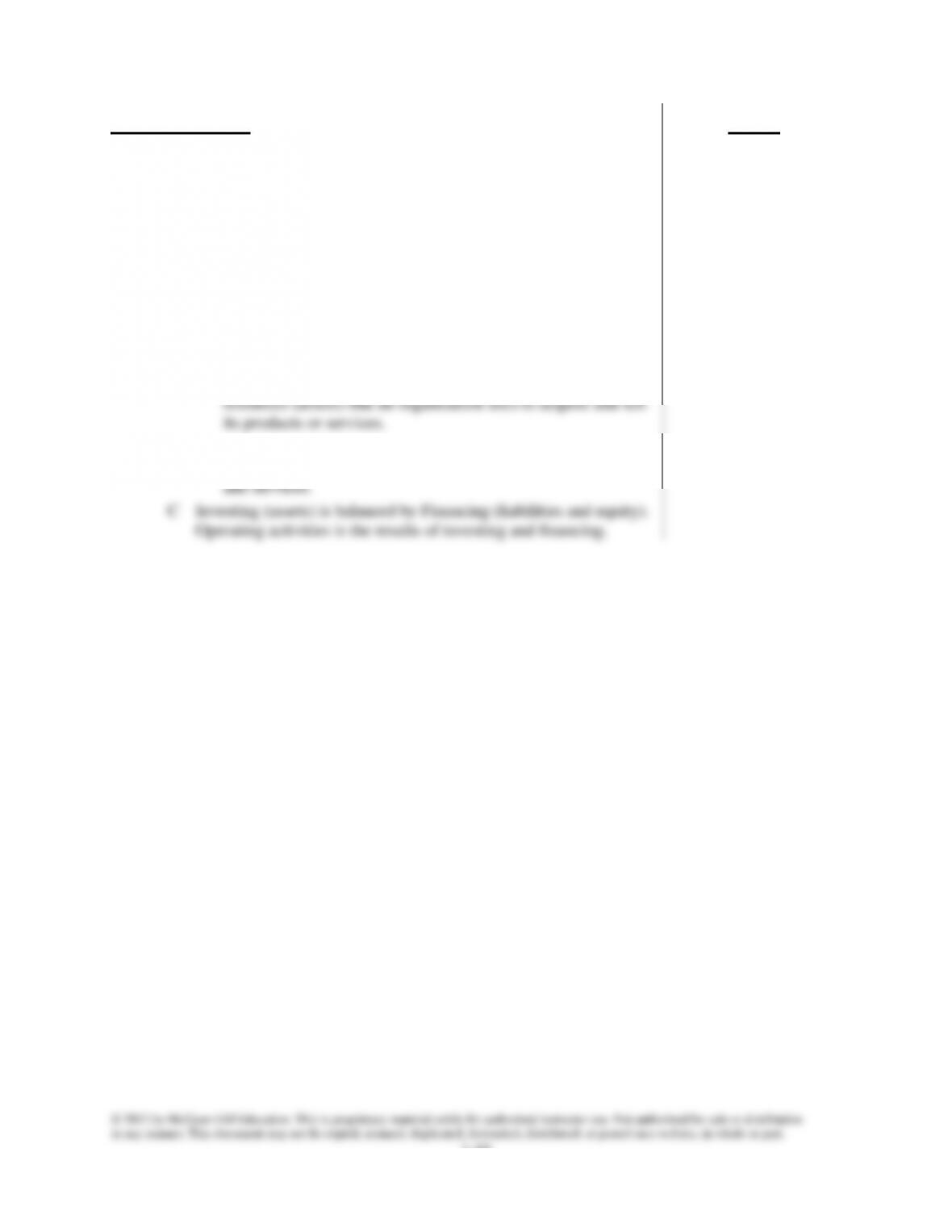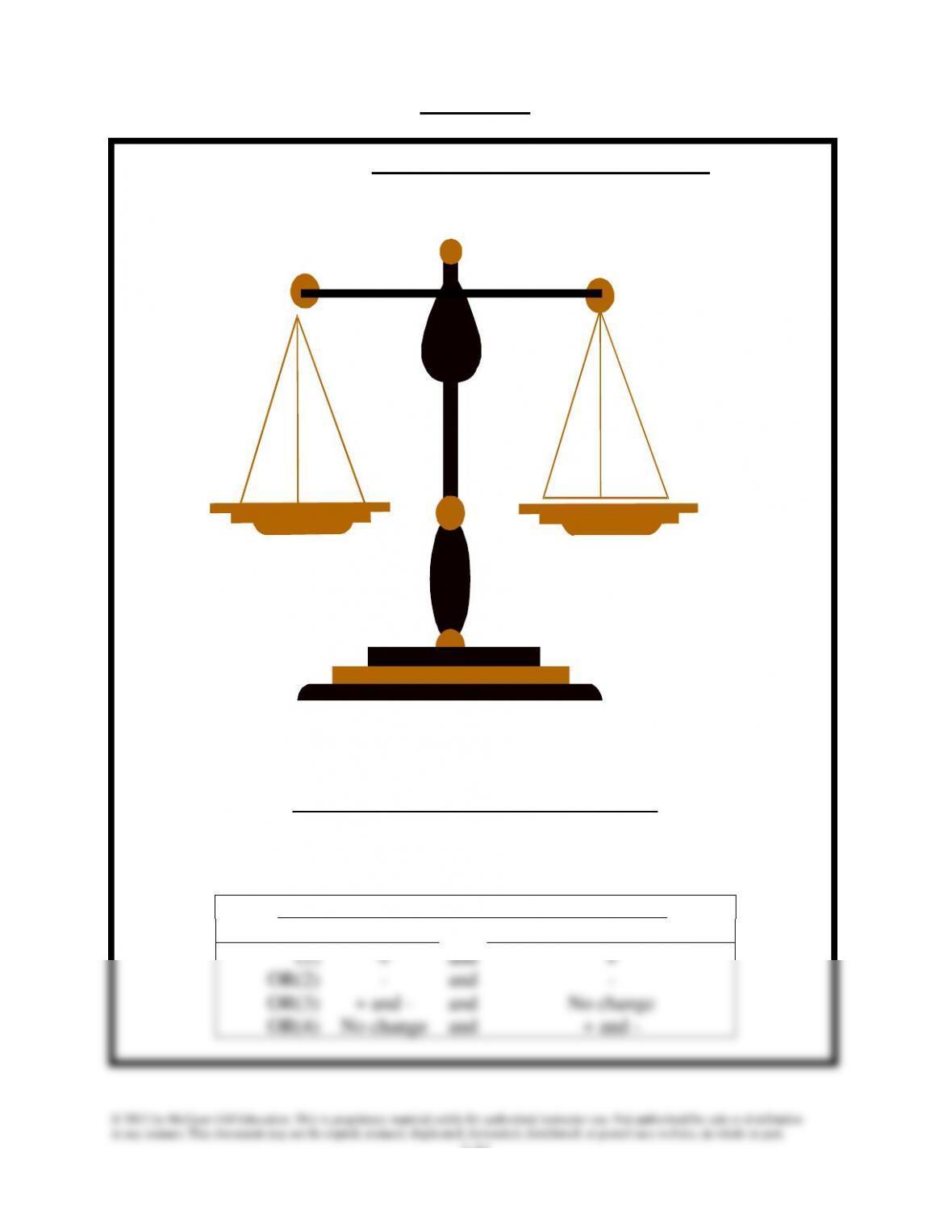I. Importance of Accounting—we live in the information age, where
information, and its reliability, impacts the financial well-being of us
all.
A. Accounting Activities
Accounting is an information and measurement system that
identifies, records and communicates relevant, reliable, and
comparable information about an organizations business activities.
B. Users of Accounting Information
1. External Information Users—those not directly involved with
running the company. Examples: shareholders (investors),
lenders, directors, external auditors, non-executive employees,
labor unions, regulators, voters, legislators, government
officials, customers, suppliers, lawyers, brokers, etc.
a. Financial Accounting—area of accounting aimed at
serving external users by providing them with general-
purpose financial statements.
b. General-Purpose Financial Statement—statements that
have broad range of purposes which external users rely on.
2. Internal Information Users—those directly involved in
managing and operating an organization.
a. Managerial Accounting—is the area of accounting that
serves the decision-making needs of internal users.
b. Internal Reports—not subject to same rules as external
reports. They are designed with special needs of external
users in mind.
C. Opportunities in Accounting
Four broad areas of opportunities are financial, managerial,
taxation, and accounting related.
1. Private accounting offers the most opportunities.
2. Public accounting offers the next largest number of
opportunities
3. Government (and not-for-profit) agencies, including business
regulation and investigation of law violations also offer
opportunities.
II. Fundamentals of Accounting—accounting is guided by principles,
standards, concepts, and assumptions.
A. Ethics—a key concept. Ethics are beliefs that distinguish right
from wrong.
B. Fraud Triangle—model that asserts three factors must exist for
person to commit fraud: opportunity, pressure, and rationalization.
